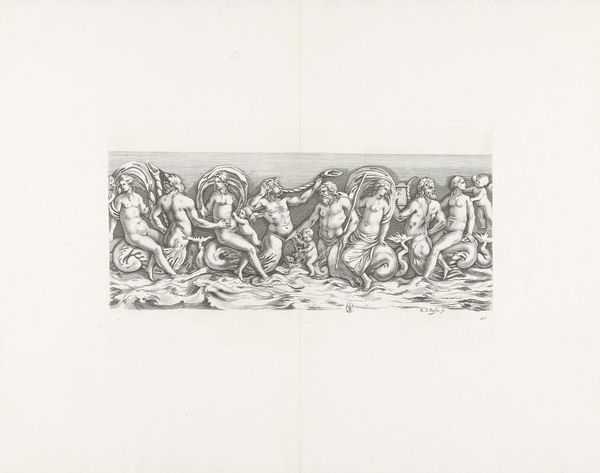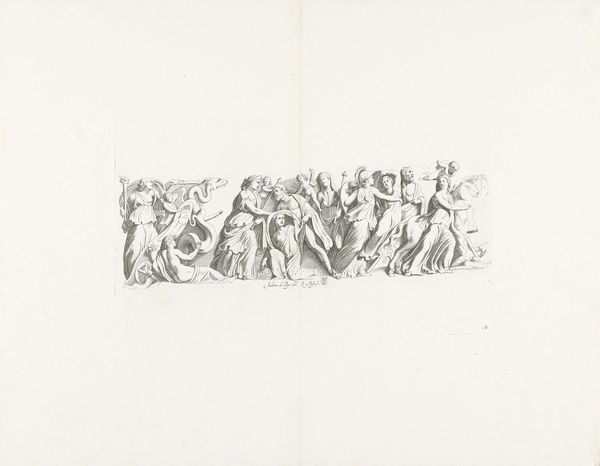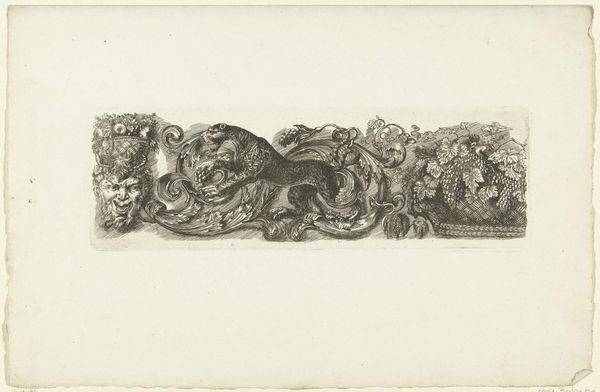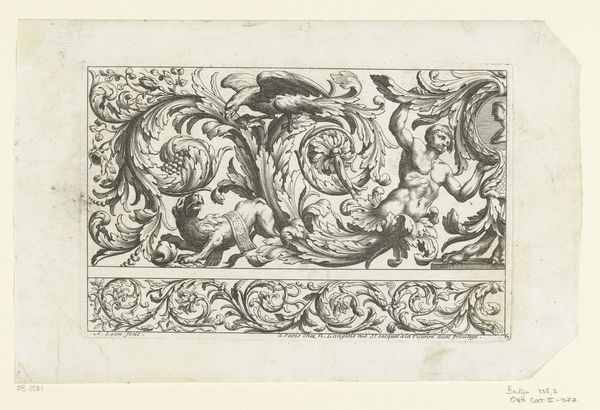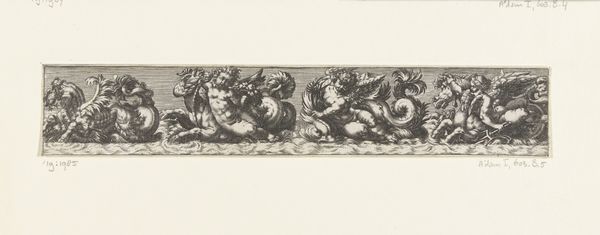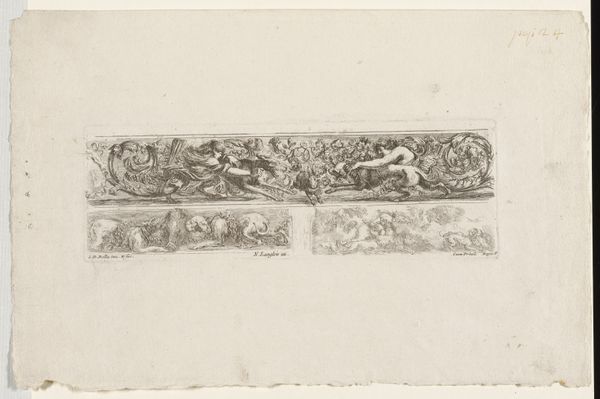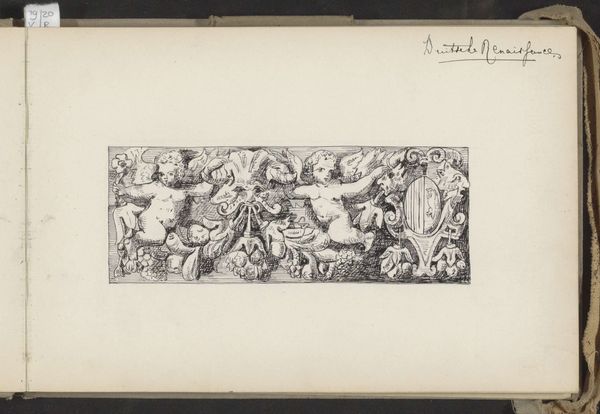
drawing, paper, ink, engraving
#
drawing
#
allegory
#
baroque
#
classical-realism
#
figuration
#
paper
#
11_renaissance
#
ink
#
nude
#
engraving
Dimensions: height 236 mm, width 408 mm
Copyright: Rijks Museum: Open Domain
Reinier van Persijn created this engraving of a sarcophagus bas-relief with sea nymphs sometime in the 17th century. What immediately strikes the eye is the array of figures emerging from the sea: nereids, putti, and other sea creatures. These are powerful symbols of fertility, abundance, and the life-giving force of water. The central figure emerging from a shell reminds us of Botticelli's Venus, a motif harking back to ancient Roman depictions of maritime deities. This 'Venus Pudica' pose, where she modestly covers herself, is a gesture that echoes through time, seen in sculptures from antiquity to the Renaissance. The repetition of this gesture is not mere imitation but a cultural memory asserting itself. Consider how the motif of the sea nymph evolves, transforming from a symbol of divine beauty to a more complex figure representing the untamed aspects of nature. The emotional intensity of the sea, its chaos and generative power, engages the viewer at a subconscious level, reminding us of the elemental forces that shape our world. It is a visual language that transcends epochs, resurfacing and evolving, always carrying echoes of its origins.
Comments
No comments
Be the first to comment and join the conversation on the ultimate creative platform.
